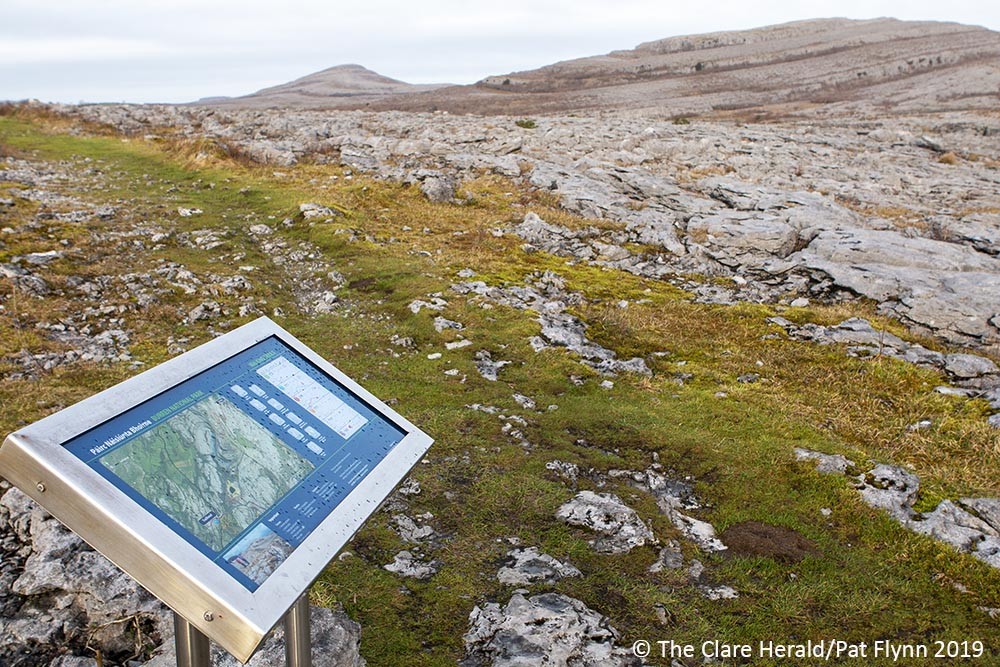
A new book on Ireland’s iconic karst landscape has been launched by the Geological Survey Ireland.
David Drew’s new book ‘Karst of Ireland: Landscape – Hydrogeology – Methods’ was launched at the annual Joint International Association of Hydrogeologists/Geotechnical Society Lecture, which this year is dedicated to karst in hydrogeology and engineering.
The limestone of Ireland formed over 300 million years ago when we were in the tropics and covered by warm, shallow seas. Karst landscapes, including caves, comprise some of the most spectacular scenery globally and Ireland is no exception.
The Burren in County Clare is famously limestone and the Aillwee and Doolin Caves are karst features in the limestone – their international geological importance contributed to the Burren and Cliffs of Moher gaining UNESCO Global Geopark status.
Karst lakes, known as turloughs in Ireland, are important features of the Irish countryside, particularly west of the Shannon and people living and working in areas close to a turlough understand the significance of karst in farming, land and flood management, and planning. Karst rocks are a major source of drinking water in Ireland and world-wide, both as groundwater wells and as natural spring wells. The presence of natural spring wells in Ireland has a cultural legacy as some have associations with the origins of places names, local saints and cures.
Over 40% of Ireland’s bedrock is limestone and much of this is now karst due to dissolution of the limestone by rainwater. Some of the most populated areas in Ireland, including the cities of Dublin and Limerick and large parts of Galway and Cork cities, are on karstified limestone. Industry, agriculture, leisure and tourism in many parts of the country are influenced by, or may influence, the karst beneath.

Therefore, a specialist understanding of karst is necessary for successful development and environmental management. Many professionals – hydrogeologists, hydrologists, environmental scientists, catchment scientists, engineers, planners, public health specialists, ecologists, environmental regulators, as well as members of the public with an interest in and a concern for the natural environment – work, or will work, with karst at some point.
This beautifully produced 318 page full colour, A4 publication is written both for professionals and for others with an interest in karst. David Drew guides the reader through the complexities of the karst landscape by introducing karst within an international context and then focusing on the karst of Ireland.
David provides the ‘mental image’ of karstified areas that is needed for effective environmental management through clear descriptions and excellent photographs, illustrations and charts. This book is not only a legacy of David’s work and passion but also provides a springboard to increase and improve our knowledge – and more effective environmental management – for future professionals and enthusiasts.
David Drew has succinctly pulled together his 45 years’ of experience in applied research and practical investigative work, the majority of which has been in Ireland, to provide this revealing guide into Irish Karst and how to further our understanding of karst. This book dovetails his karst knowledge with the work of the past and present hydrogeologists in GSI – in particular Caoimhe Hickey – and has used the extensive data within GSI to support his assessments and conclusions. The book also includes practical contributions from the academic and consultancy sectors.
The Karst of Ireland book has been funded mainly by the Geological Survey Ireland Geoscience Research Programme with additional funding from the Environmental Protection Agency and contributions in kind from the GSI, Trinity College Dublin, Tobin Consulting Engineers and Donal Daly.
The Karst of Ireland book will be available locally or through the GSI Customer Centre and online shop, or through the Government Publications Office for €20.
